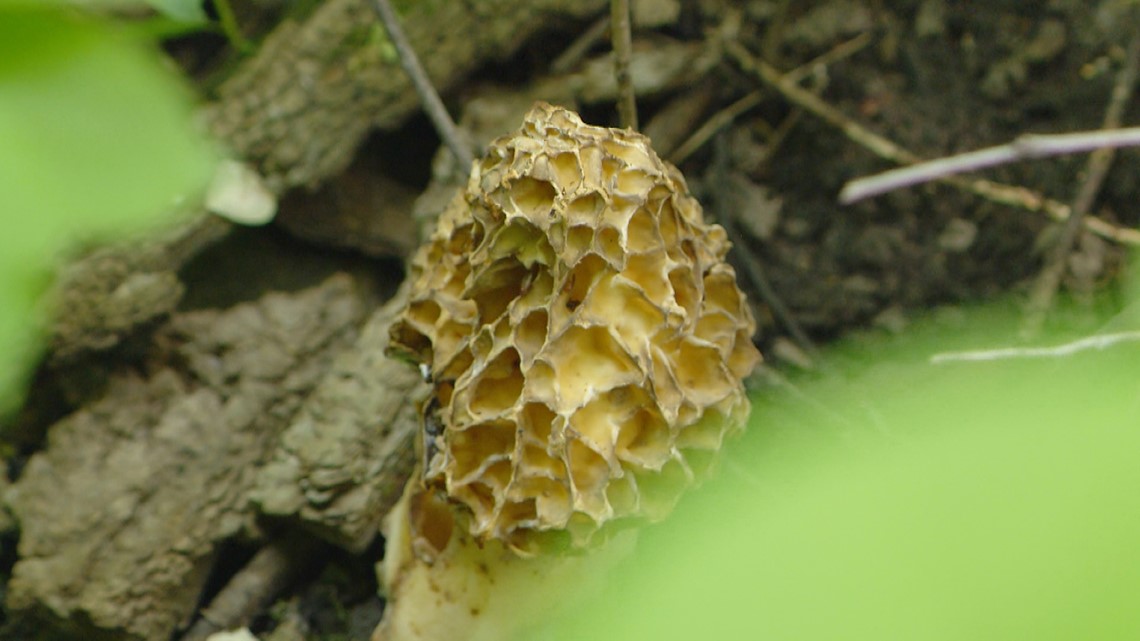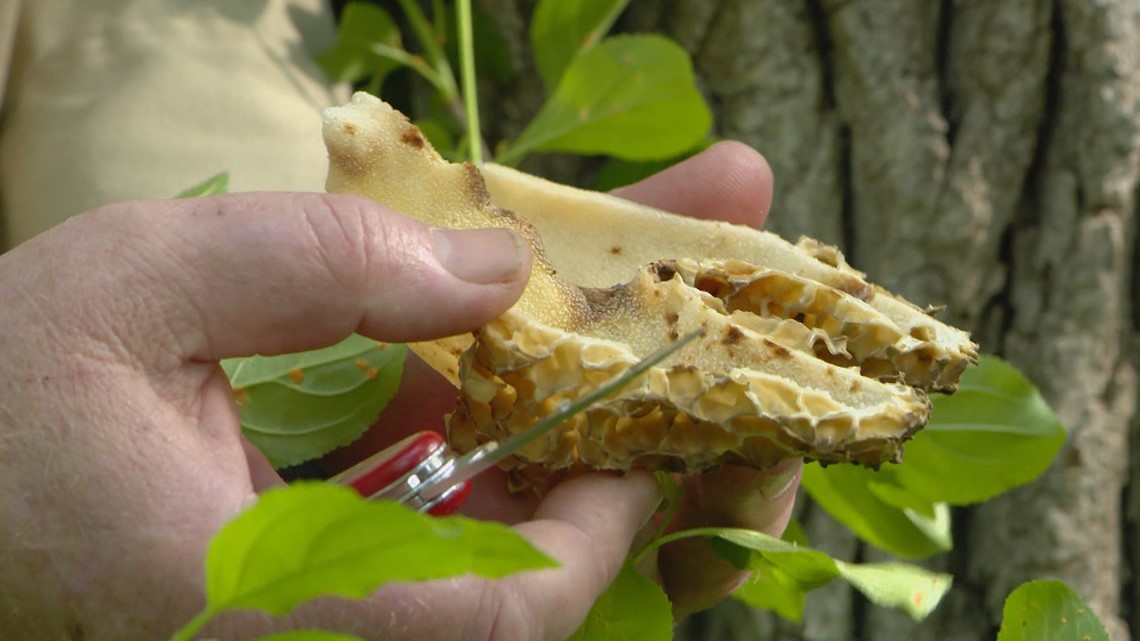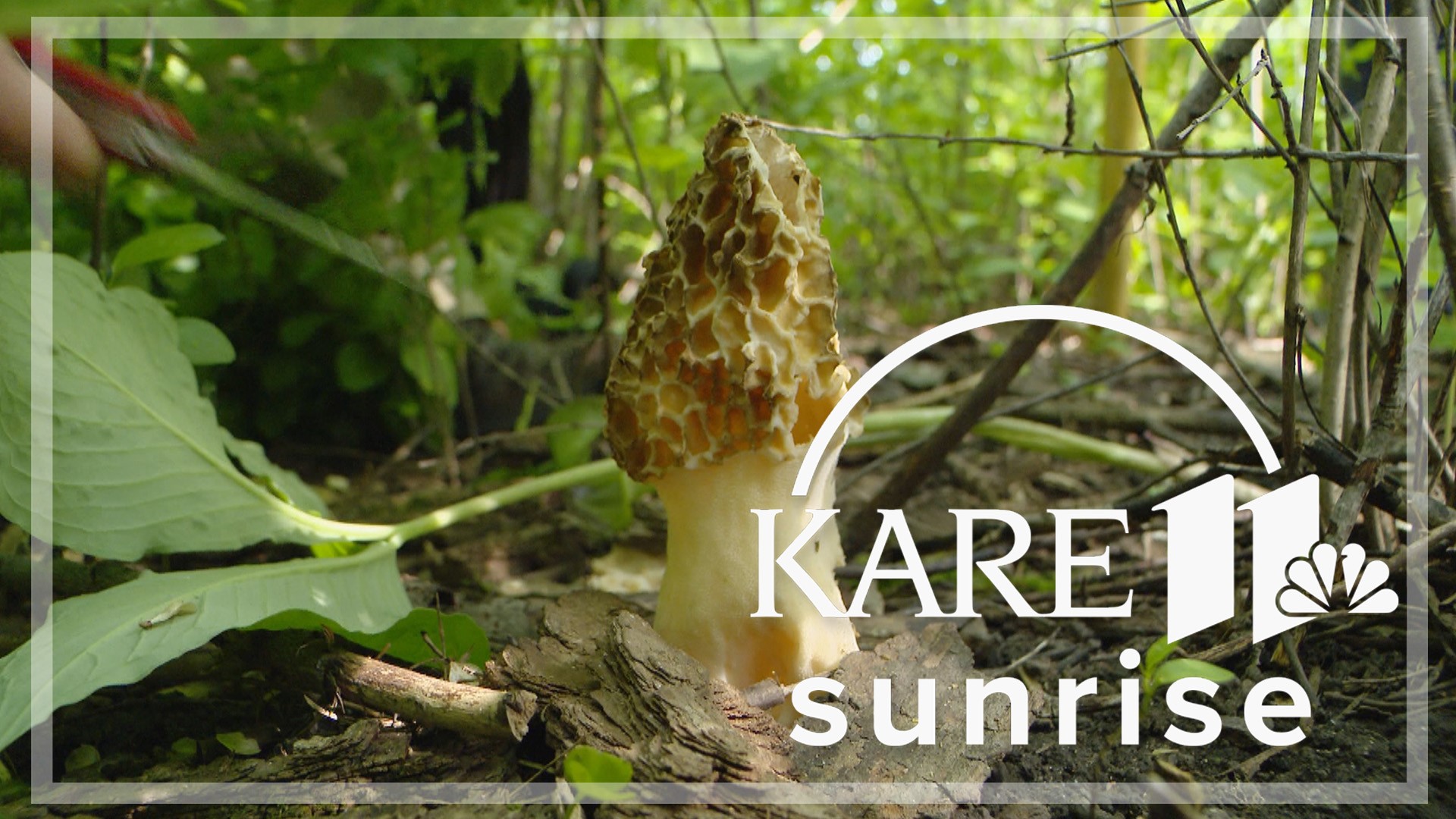LAKEVILLE, Minn. — For many, morel mushrooms are a spring treasure.
Maybe you've heard of friends foraging for the wild mushrooms or tried it yourself. If you're interested, this is the time of year when you're most likely to find success.
"A lot of mushrooms are mysterious because they're not well studied." said Peter Martignacco from the Minnesota Mycological Society.
Martignacco and John Lamprecht shared some suggestions while searching for morels at Casperson Park in Lakeville.
"The flavor and they're rare and spendy... Like $70 a pound for fresh ones," said Lamprecht. "We're going to look on the ground. Morels always grow on the ground."
Morels often grow near decaying elm, apple and cottonwood trees.


"See the bark is starting to come off of this and it's dead all the way up." Lamprecht said, pointing to a tree. "I love looking in places where there are banks. Because it's just easier to see."
After about an hour on the hunt, Martignacco found a morel.
"We would call these big foots," said Lamprecht. "These are late in the season."
Not long after finding the first morel, the group found three more.


"Once you find some, then all of a sudden you're hooked and you want to find more," said Lamprecht.
Martignacco also shared how to determine if a wild mushroom is a morel.
"They're totally hollow inside," Martignacco said.


If you are interested in learning more, the Minnesota Mycological Society offers guided forays from May to October.
Martignacco and Lamprecht also pointed out, morels should not be eaten raw and the mushrooms need to be cooked to be eaten. Both said they believe the tastiest way to cook the mushrooms is in butter.
James Beard award-winning chef Alan Bergo has several recipes that incorporate morels, including mushroom matar, baked morels with garlic butter and crab stuffed morel mushrooms. To check out these recipes or any of Bergo’s other morel recipes, click here.
Watch more KARE11 Sunrise:
Watch the latest coverage from KARE11 Sunrise in our YouTube playlist:

